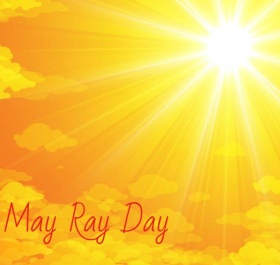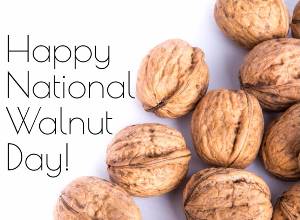May Ray Day
 Today is May Ray Day. Its goal is simple. If you look out the window and it’s sunny, go outside and enjoy it. (Common sense tip: If you’re in the middle of a business meeting, driving a car, or standing anywhere above the first floor, wait for a more appropriate time and place to step outside.)
Today is May Ray Day. Its goal is simple. If you look out the window and it’s sunny, go outside and enjoy it. (Common sense tip: If you’re in the middle of a business meeting, driving a car, or standing anywhere above the first floor, wait for a more appropriate time and place to step outside.)
I have been unable to determine the creator of May Ray Day. It could be someone who sells sunscreen or solar panels or who worships the sun and wants to indoctrinate others to believe in Ra, Helios, Sol, Utu, or the lesser-known gods of Melanoma, Squamous, and Basal Cell.
May is Skin Cancer Awareness Month. About 86 percent of melanomas and 90 percent of other skin cancers are associated with exposure to UV radiation. Before you head out, read these myth-busting facts from the Skin Cancer Foundation. We’ve thrown in one about tanning beds for good measure.
Myth: UVB radiation is a good source of vitamin D.
Fact: We can produce only a limited amount of vitamin D from UVB radiation. For Caucasians, that limit is reached after just five to 10 minutes of midday sun exposure. After reaching the limit, further exposure will not increase the amount of vitamin D in the body. Rather, it has the opposite effect: the vitamin D stored in the body begins to break down, leading to lower vitamin D levels.
Myth: Sun exposure is the only source of vitamin D.
Fact: Vitamin D can be obtained from oily fish (like salmon, fresh tuna, trout and sardines) and cod liver oil, as well as from fortified orange juice and milk, yogurts, and some cereals. Supplements are readily available and inexpensive.
Myth: Tanning beds are a healthy option for boosting vitamin D levels.
Fact: The indoor tanning industry often makes the false claim that indoor tanning is helpful for vitamin D production. In reality, vitamin D is received through exposure to UVB rays; the bulbs used in tanning beds mainly emit UVA rays. Tanning beds are a known carcinogen. Just one indoor UV tanning session increases users’ chances of developing melanoma by 20 percent, and each additional session during the same year boosts the risk almost another two percent.
So apply a liberal amount of broad-spectrum sunblock, put on your sunglasses, and don a wide-brimmed hat before venturing outside. (If it’s raining, don’t worry. There are plenty of days left in May. One of them will surely be sunny.)
Sun responsibly and have a happy May Ray Day!

 Today is National Walnut Day, created in 1949 by the
Today is National Walnut Day, created in 1949 by the  Today is National Slider Day, created in 2015 by the marketing geniuses at White Castle. Sadly, NYC Burger Week (May 1 -7) is now defunct, but you can still celebrate your belly bombs anytime during
Today is National Slider Day, created in 2015 by the marketing geniuses at White Castle. Sadly, NYC Burger Week (May 1 -7) is now defunct, but you can still celebrate your belly bombs anytime during  Today is Underground America Day, created in 1974 by architect
Today is Underground America Day, created in 1974 by architect 